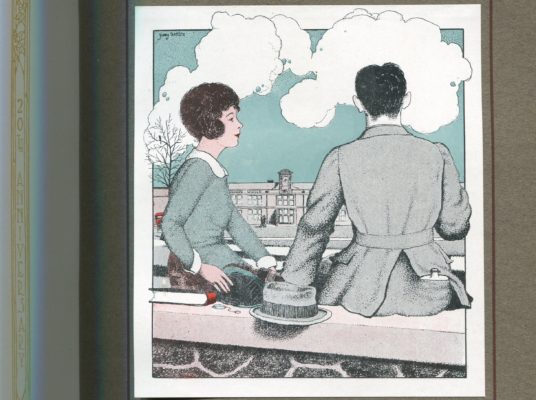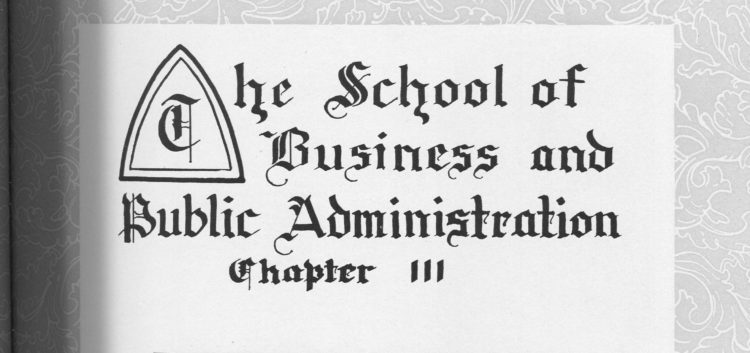WashU’s School of Commerce and Finance was founded in 1917 as the First World War was heading into its final year. In 1920, as the country and economy began to recover from the war, Student Life reported University increases in tuition, salaries, and room rents:
“The increase in tuition applies only to students entering Washington for the first time…The tuition in the College, the School of Commerce and Finance, the School of Architecture, and the School of Engineering will be raised from $150 to $200 per year.”
 Faculty salaries were set to increase by 50% over the 1916-1917 rates for professors making $4,000 or less. The increase was contingent on reaching a campaign goal for a salary endowment fund.
Faculty salaries were set to increase by 50% over the 1916-1917 rates for professors making $4,000 or less. The increase was contingent on reaching a campaign goal for a salary endowment fund.
In 1925, Isador Loeb was named the third dean of the business school. He had been acting president of the University of Missouri, was a well-known constitutional lawyer, a skilled political scientist, and an expert on tax laws and Missouri history. The new dean had a keen interest in public service and was responsible for a new focus and the new name: the School of Business and Public Administration.
Loeb introduced bachelor’s and master’s degree programs in public administration to the curriculum at WashU, which had previously offered only BS and MS degrees in business administration.
 By 1929, the business school had 200 students enrolled and 100 candidates for degrees. It had changed its name to include Public Administration a few years earlier and was clearly gaining in stature as suggested in this essay from The Hatchett yearbook:
By 1929, the business school had 200 students enrolled and 100 candidates for degrees. It had changed its name to include Public Administration a few years earlier and was clearly gaining in stature as suggested in this essay from The Hatchett yearbook:
“The man with a business college education is receiving recognition of a new character. He is succeeding where the so-called ‘practical’ man is failing. After considering this situation and the fact that there are more openings for business men than for any other line of workers, the wonderful scope and possibilities of this school in the future will be seen.”
Dean Loeb retired in 1940 after serving longer than the previous two deans. He did not retire from public service. Archival documents describe Loeb’s post-deanship career this way, “He accepted the grueling job of the Office of Price Administration (OPA) price administrator for the St. Louis area, served as a special investigator for the National War Labor Board, and became involved in the drive for a new state constitutional convention. He died in 1954 at age 85.”

1923 illustration from The Hatchet yearbook for a student group called The Quad-Wrangles.
Read more on the Centennial website, Olin100.wustl.edu
Sources: “Fifty Years in Business,” by George Monaghan, Washington Magazine, 1967; Washington University in St. Louis, A History, Ralph E. Morrow, 1996; The Hatchett, Washington University yearbook, 1923, 1929; WUSTL Archives



